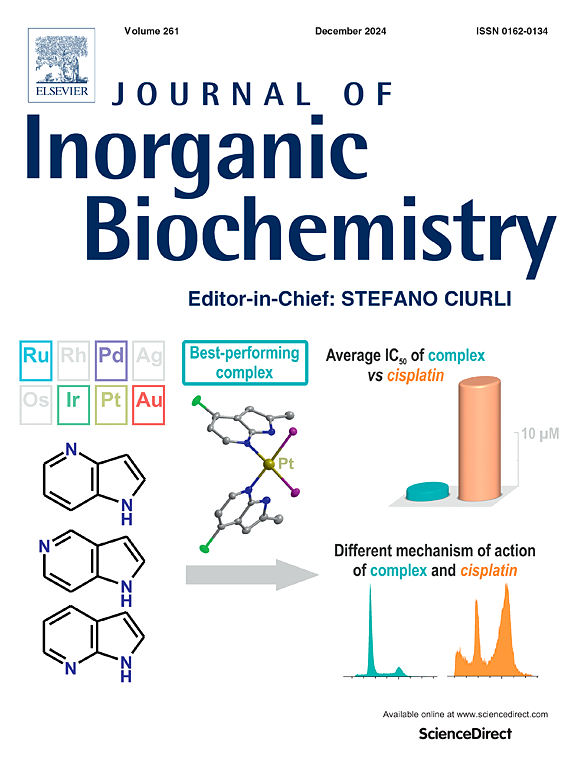Recent advances in Schiff bases and Cu(II) complexes: Applications in fluorescence imaging and anticancer therapy (2020–2024)
IF 3.2
2区 化学
Q2 BIOCHEMISTRY & MOLECULAR BIOLOGY
引用次数: 0
Abstract
Schiff base derivatives have garnered significant attention for their bioimaging and anticancer potentials. In the realm of bioimaging, Schiff base derivatives have shown exceptional capabilities in detecting various metal ions, due to their strong binding affinities and fluorescence properties. Moreover, the potential Schiff bases and their Cu(II) complexes as anticancer agents is being actively explored, with studies demonstrating their ability to induce apoptosis and inhibit cell proliferation in various cancer cell lines. This review article provides a comprehensive overview of recent advancements in the field of cell imaging utilizing Schiff base derivatives for the recognition of Cu2+ in living cells and organisms. From 2022 to 2024, significant progress has been made in understanding the applications of Schiff bases in cell imaging techniques, ranging from fluorescence microscopy to molecular imaging modalities. Additionally, article has focused on leveraging the unique properties of Schiff base Cu(II) complexes to expand the anticancer efficacy. The article offering insights into the mechanisms underlying enhanced anticancer activity and the development of novel anticancer agents.

希夫碱和Cu(II)配合物在荧光成像和抗癌治疗中的应用(2020-2024)
希夫碱衍生物因其生物成像和抗癌潜力而受到广泛关注。在生物成像领域,希夫碱衍生物由于其强大的结合亲和力和荧光特性,在检测各种金属离子方面表现出了卓越的能力。此外,潜在的希夫碱及其Cu(II)配合物作为抗癌药物正在被积极探索,研究表明它们在多种癌细胞系中具有诱导细胞凋亡和抑制细胞增殖的能力。本文综述了利用希夫碱衍生物在活细胞和生物体中识别Cu2+的细胞成像领域的最新进展。从2022年到2024年,在理解希夫碱基在细胞成像技术中的应用方面取得了重大进展,从荧光显微镜到分子成像方式。此外,文章还着重于利用希夫碱铜(II)配合物的独特性质来扩大抗癌功效。本文对增强抗癌活性的机制和新型抗癌药物的发展提供了见解。
本文章由计算机程序翻译,如有差异,请以英文原文为准。
求助全文
约1分钟内获得全文
求助全文
来源期刊

Journal of Inorganic Biochemistry
生物-生化与分子生物学
CiteScore
7.00
自引率
10.30%
发文量
336
审稿时长
41 days
期刊介绍:
The Journal of Inorganic Biochemistry is an established international forum for research in all aspects of Biological Inorganic Chemistry. Original papers of a high scientific level are published in the form of Articles (full length papers), Short Communications, Focused Reviews and Bioinorganic Methods. Topics include: the chemistry, structure and function of metalloenzymes; the interaction of inorganic ions and molecules with proteins and nucleic acids; the synthesis and properties of coordination complexes of biological interest including both structural and functional model systems; the function of metal- containing systems in the regulation of gene expression; the role of metals in medicine; the application of spectroscopic methods to determine the structure of metallobiomolecules; the preparation and characterization of metal-based biomaterials; and related systems. The emphasis of the Journal is on the structure and mechanism of action of metallobiomolecules.
 求助内容:
求助内容: 应助结果提醒方式:
应助结果提醒方式:


